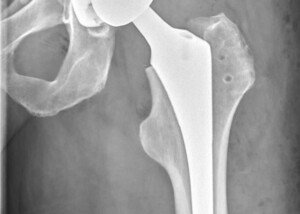Is there anything one can do to prevent the actual need for a hip replacement surgery?
This isn’t about avoiding surgery with conservative treatment for a bad hip.
It’s about outright preventing the cartilage in the hip joint from degenerating to the point where there’s any pain at all.
Yes, lots of people “avoid” hip replacement surgery.
But they still suffer from daily hip joint pain, are limited in their activities, take pain pills, apply ice and dread the day when their conservative treatment no longer can manage the condition.
While other women and men never get a bad hip in the first place; the cartilage is always plentiful enough to keep the joint working without pain or with only a little bit of discomfort.
Genes vs. Lifestyle: Can We Prevent Ever Needing a Total Hip Replacement?
Ever hear that old saying, “Genetics loads the gun, but lifestyle pulls the trigger”?
“Truer words have not been spoken,” says Barbara Bergin, MD, board certified orthopedic surgeon at and co-founder of Texas Orthopedics, Sports & Rehabilitation Associates.
“We are our parents’ children, and if they got arthritis, we are likely to as well. In many cases, simply the shape of the hip that you inherit is responsible for the development of arthritis.
“Not everyone’s hip is perfectly round, and just a slight variation can predispose to getting arthritis.
“In general, even if you know you have that unusual shape to your hip, there is not much you can do about it.
“Just like there’s not much you can do about inheriting the predisposition to having hypertension or red hair.
“But, there are things you can do to assure that the joints will wear out in short shrift: sustain injuries, particularly sports injuries, and gain a lot of weight.”

Yves Picq, CC BY-SA
Let’s take a woman who weighs 280 and lives with severe hip pain at age 45. She’s told she needs joint replacement surgery.
It’s also known that her father needed total hip replacement surgery when he was 60.
Neither have ideal hip bone anatomy, so it looks as though they missed the genetic jackpot for having good hip bones well into old age.
However, one has to wonder: Would this woman need total hip replacement surgery (at least at age 45) if she weighed only 150 pounds and had been practicing yoga and doing strength training for years?
The 130 pounds of excess weight, plus lack of exercise, are fingers pulling on the trigger of that loaded gun.
Dr. Bergin explains, “While you can’t draw the conclusion that if you don’t play sports and stay skinny, you will prevent arthritis, you can draw the conclusion that if you injure your hip or knee, and you become morbidly obese, you will likely suffer those arthritic changes at a younger age than if you hadn’t.”

One more reason to reverse morbid obesity: hip health. Michael Coghlan from Adelaide, Australia
What About Hip Replacement in Those with Empty Guns?
“And even those who might not have a genetic predisposition to arthritis, will develop it if they injure the delicate cartilage or ligaments in their knees and hips, and if they become morbidly obese,” says Dr. Bergin.
A car accident or some other accident such as a crash on a ski slope or fall from a height could be the type of injury that triggers the development of hip problems that, later on in life may necessitate the need for a joint replacement.
The type of hip problem that requires the artificial joint is severe osteoarthritis.
Cartilage provides shock absorption between bones.
In OA, it wears down over time such that in severe cases, an X-ray will show bone-on-bone contact in the joint.
Prevention of Total Hip Replacement with Exercise in Those without Osteoarthritis
“There is no exercise to do to prevent the development of arthritis,” says Dr. Bergin.
There is no research on what specific exercises will prevent disintegration of the hip joint’s cartilage.
Nobody has followed, for instance, a group of very fit people who regularly did barbell squats, box jumps, wind sprints and heavy-bag karate kicking to see who, decades later, had a THR unrelated to a traumatic injury.
Dr. Bergin says it’s not so much about what kind of exercise you should do to prevent a THR. Rather, it’s about what type of exercise to avoid.
Dr. Bergin explains, “Just things you can stop doing to minimize the potential. No squats. No jumping and squatting. No deep knee bends with kettlebells. No stair running.”
This guideline can be open to subjective interpretation, because these various movements are commonplace at gyms – but their context needs to be considered.
For example, the fitness buff who’s really into CrossFit’s daily crushing workouts is at much higher risk of developing chronic joint damage than is the fitness buff whose squatting and jumping routines consist of only three sets of 10 reps each – once or twice a week.
Example of a CrossFit Workout of the Day (WOD) – Done All in One Shot
• 5 ring handstand pushups
• 5 squat cleans, 185 / 125 lb.
• 10 handstand pushups
• 10 squat cleans, 155 /105 lb.
• 20 handstand pushups
• 20 squat cleans, 135 / 95 lb.
• 40 ring dips
• 40 squat cleans, 95 / 65 lb.
That’s 75 weight-bearing squats in as short a time as possible, along with the other exercises.
And then who knows what the other WOD’s for the remaining days of the week will entail?
CrossFit enthusiasts have marvelous physiques and, when free of injury, possess very impressive physical abilities. But this discipline is relentless on the joints.
Dr. Bergin continues, “Now I would have to say that hip replacement is a little less related to exercise than knee replacement. Our knees are really crummy weak structures that get injured with the drop of the hat.
“These recommendations [no squat, jumping or stair running] are more likely to prevent knee replacement.
“Hip arthritis is much more related to genetics as well as the shape of the hip, than is knee arthritis.”
What About THR Prevention in Those Already with Osteoarthritis?
Toughing out the pain and being stubborn are not valid ways to prevent the need for a total hip replacement.
But slowing down the progressive degeneration of the cartilage IS.
A 2013 study (Annals of Rheumatic Diseases, Svege et al) showed that exercise in people who already had OA (but not severe) delayed the need for THR.
Conservative treatment includes exercise. But the question was, Can exercise prevent the need for THR in the long-term for patients already diagnosed with OA?
The participants were followed for six years after beginning an exercise program of one-hour sessions two to three times a week that lasted 12 weeks.
The regimen was designed specifically for OA patients and consisted of functional, strengthening and flexibility exercises.
The study authors concluded that exercise therapy plus patient education can reduce the need for a THR by 44 percent.


























